SOLD
Early 20th Century Antique Ecru Color French Hand Woven Linen and Metis Fabric Made Intricately Inlaid Hand Patches Gilet
シャツとパンツのプレーンなスタイルにニュアンスを加えたり、ジャケットの着こなしをランクアップさせたりと、あれば便利なジレ。
A gilet is useful for adding nuance to a plain shirt and pants style, or for adding a touch of class to a jacket outfit.
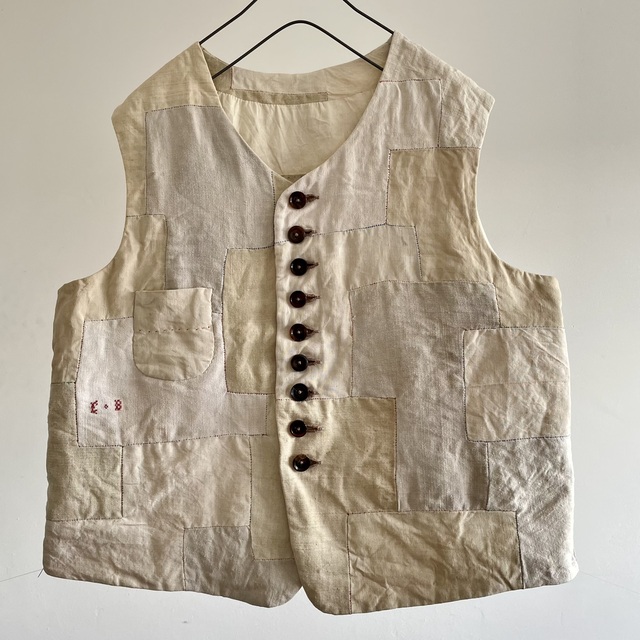
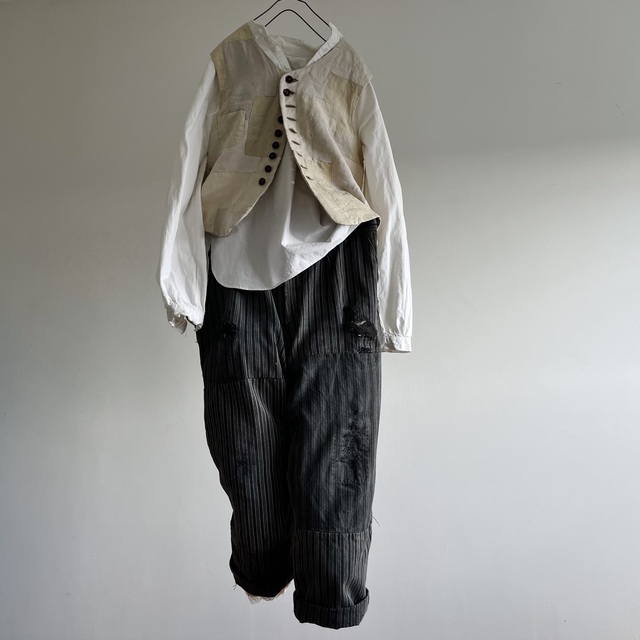
19世紀末から20世紀初頭の手動織機織りの数種類のフランスのリネンを手縫いでpatchして作ったgilet。
The gilet is made of hand-sewn patches of several types of French linen woven on manual looms from the end of the 19th century to the beginning of the 20th century.

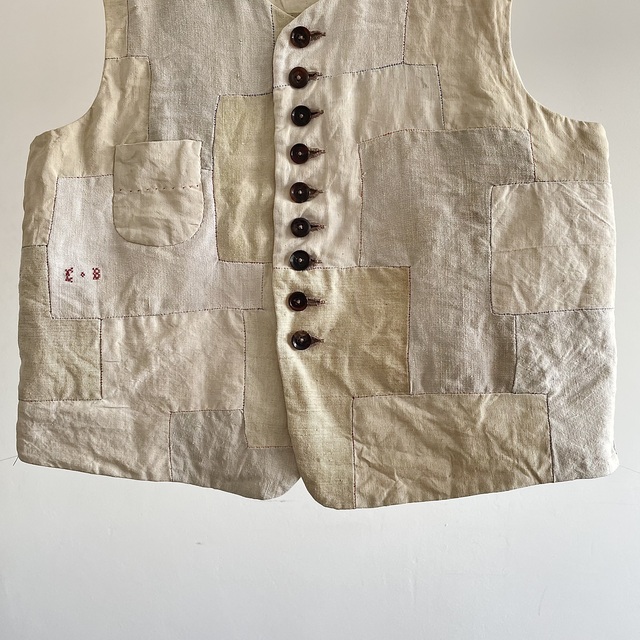
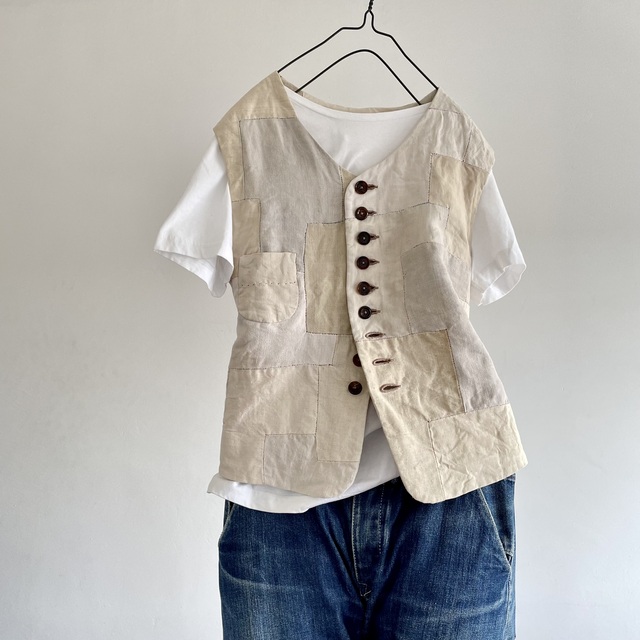
今なお世界のリネン原料のフラックス(亜麻)生産の70%を生み出し続けるフランスは、文字通りのリネン大国です。栽培には温帯から熱帯の気候を必要とするため、綿の栽培が難しいフランスの気候に適した亜麻は、衣類のみならずシーツなどの寝具や寝間着などのホームリネンから、テーブルクロスやナプキンなどのテーブルリネンにも使われフランス人にとっては綿以上に生活に密着した最も身近な繊維です。
France, which still produces 70% of the world’s flax, is literally a linen powerhouse. Flax is used not only for clothing, but also for home linens such as sheets and bedding, table linens such as tablecloths and napkins, and is the most familiar fiber to French people, more closely related to their daily lives than cotton. It is the most familiar fiber to French people, more closely connected to their lives than cotton.
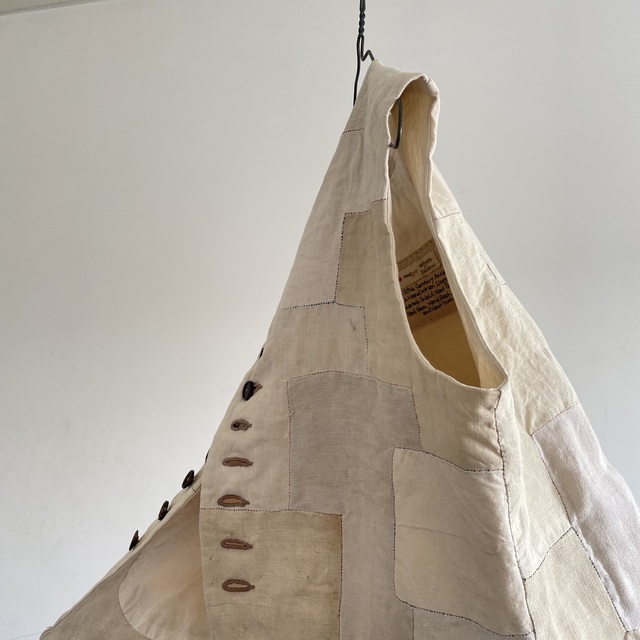
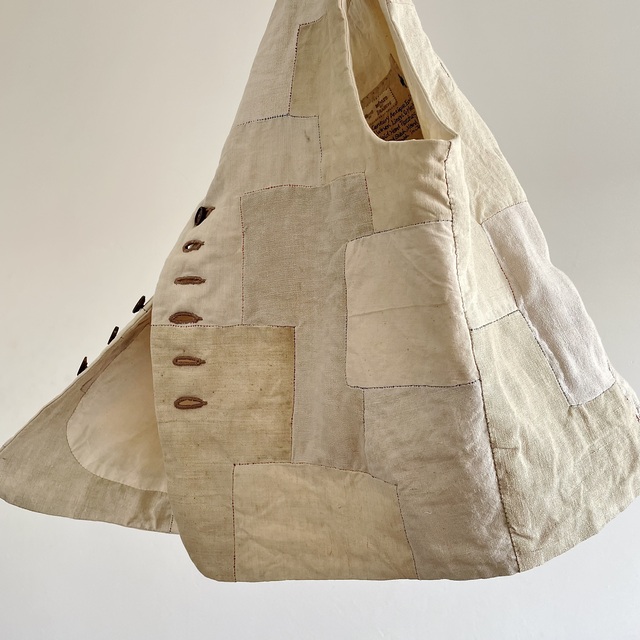
そんなリネンを手動織機で織った素朴な生地は、Biaudeに使われるVilletteの繊細な表情とは全く違った迫力を持ち、洗練や洒落っ気とは全く違った農業大国フランスの骨太さが伝わる、無骨さと素朴さが溢れています。
The rustic fabric woven from such linen on a manual loom has a completely different and powerful look from the delicate Villette used for Biaude, and is full of ruggedness and simplicity that conveys the grit of France, an agricultural powerhouse that is completely different from sophistication and stylishness.
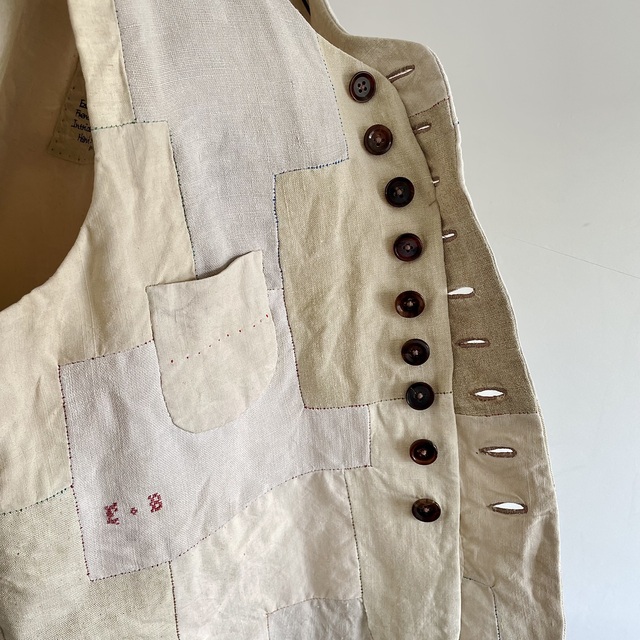
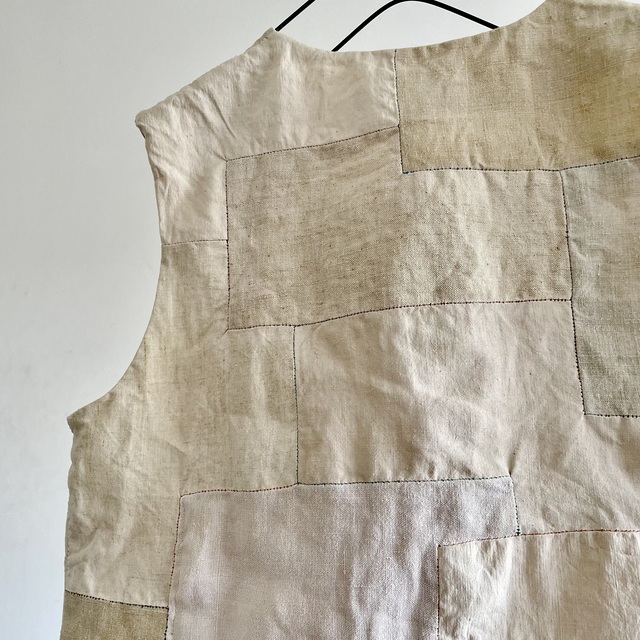
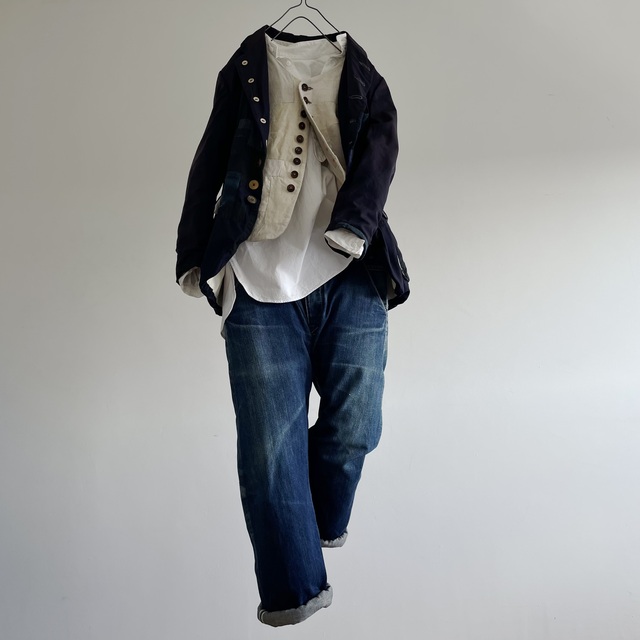
生産地や畑の違い、糸を紡ぐまでの処理方法の違いで生まれた、さまざまなecruと、ほんの少し晒されたオイスター。
Various ecru and slightly bleached oysters created from different production areas, different fields, and different processing methods until the yarn is spun.
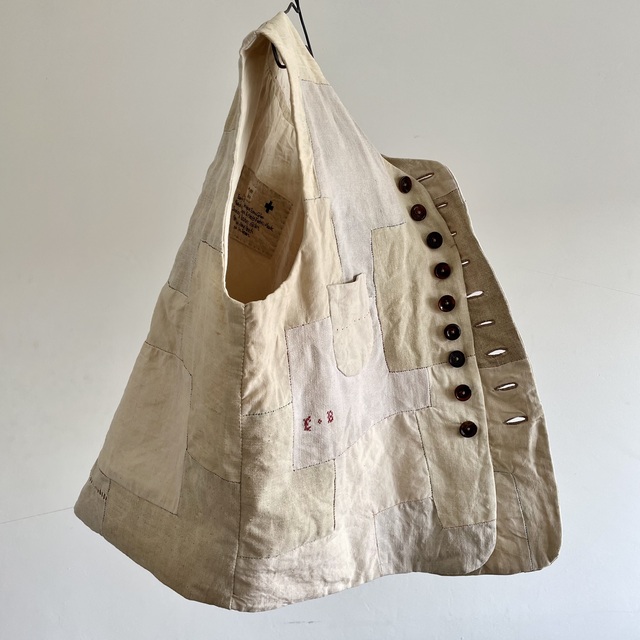
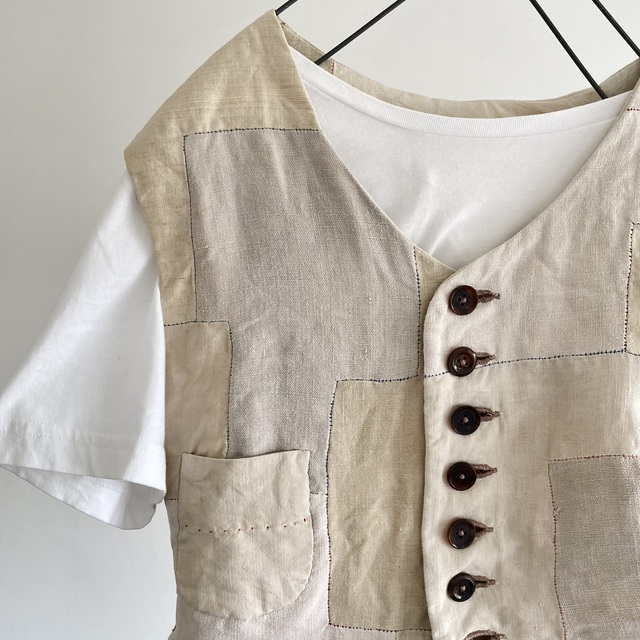
日本で「生成り」と聞くと、未晒の綿の色を思い浮かべたりオフホワイトと混同することが多いのですが、本来「生成り」はリネンのecruを言い表すために考えられたもの。色の表現にも使われ始めたが、元々は色では無く未成熟を表す言葉。
When people hear the word “kinari” in Japan, they often think of the color of unbleached cotton or confuse it with off-white, but originally “kinari” was conceived to describe the ecru of linen and began to be used to describe color, but originally the word was not used for color but for immaturity.
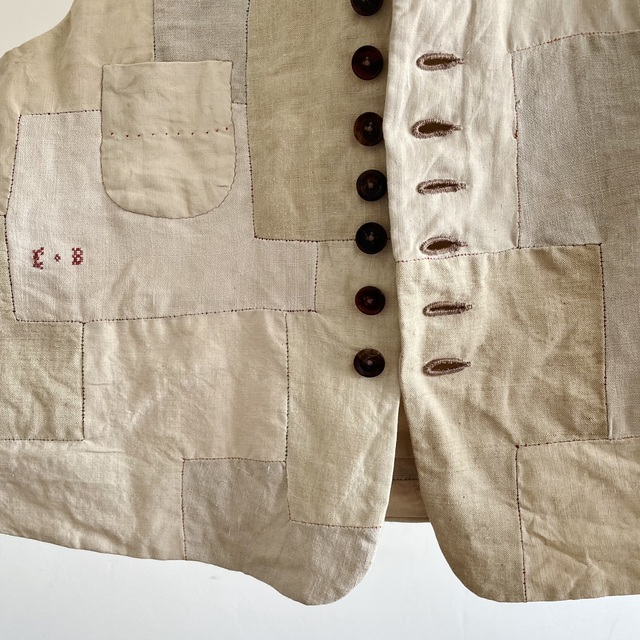
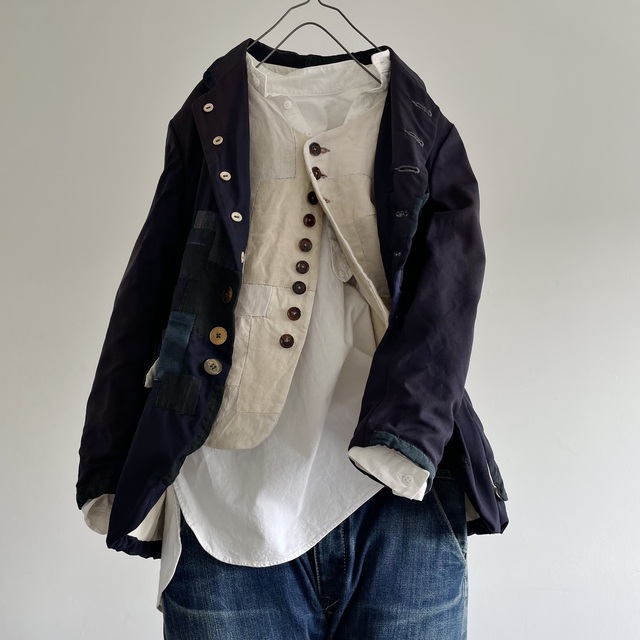
その生地をフランスならではの生地を上から被せて縫い付けるのではなく、くり抜いた部分に接ぎ合わせるように縫い付けモザイク状にpatchしていく“Travile de Patch”で作り出した身頃。
The body is made by “Travile de Patch”, a technique unique to France in which the fabric is not sewn over the top, but is patched in a mosaic-like pattern by sewing it on to the hollowed-out areas.
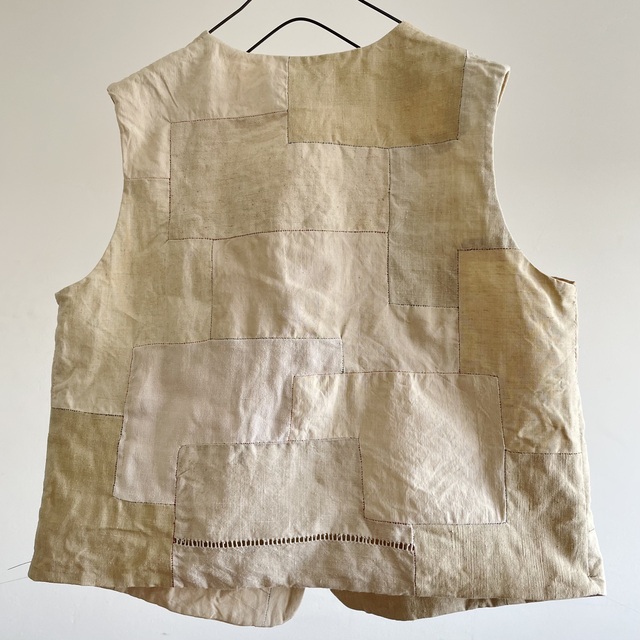
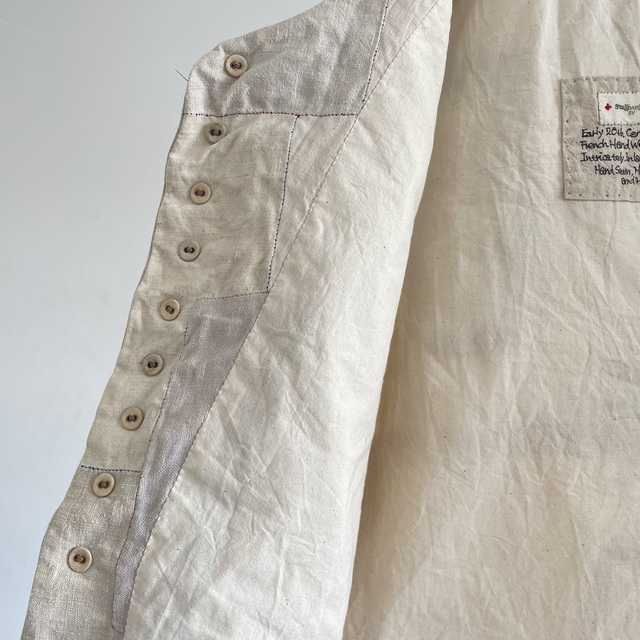
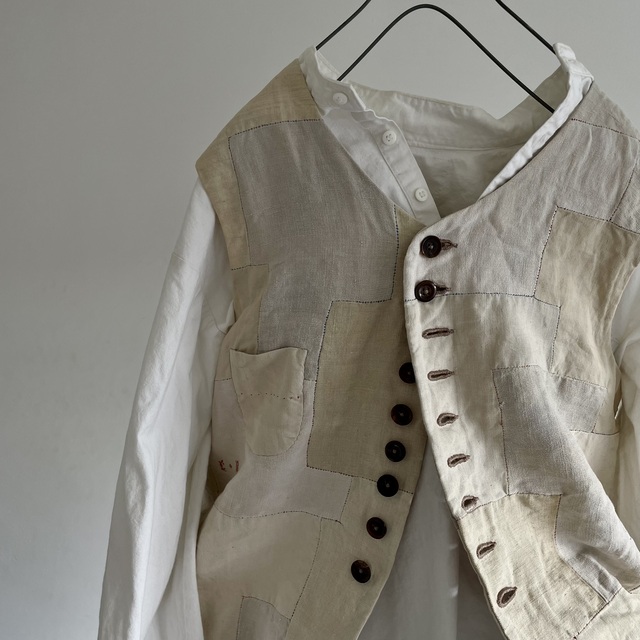
単純な形の反復ではなく、複雑に組み合わさった象嵌模様。
The inlaid pattern is not a repetition of simple shapes, but an intricate combination of shapes.
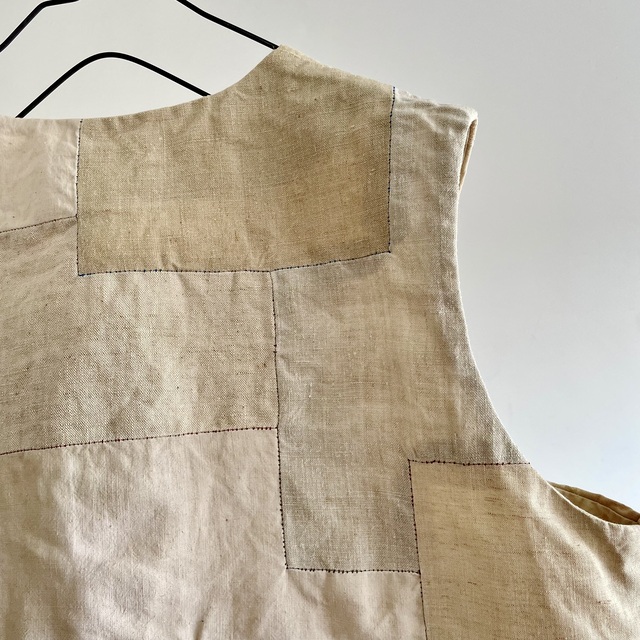
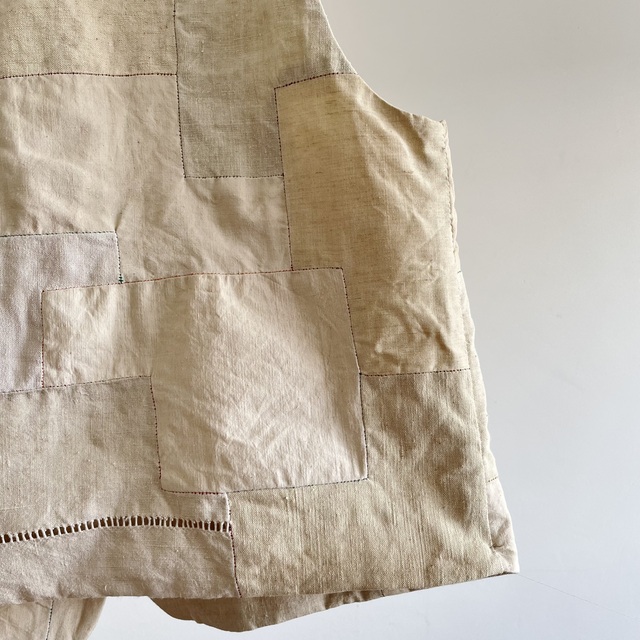
控えめな色のコントラストをつけた綿糸で、1~1.5mm前後の手縫の細かなまつり縫いで繋いだpatch。
PATCH is made of cotton threads with discreet color contrasts, joined with fine hand-stitched blind stitches of around1~ 1.5 mm.
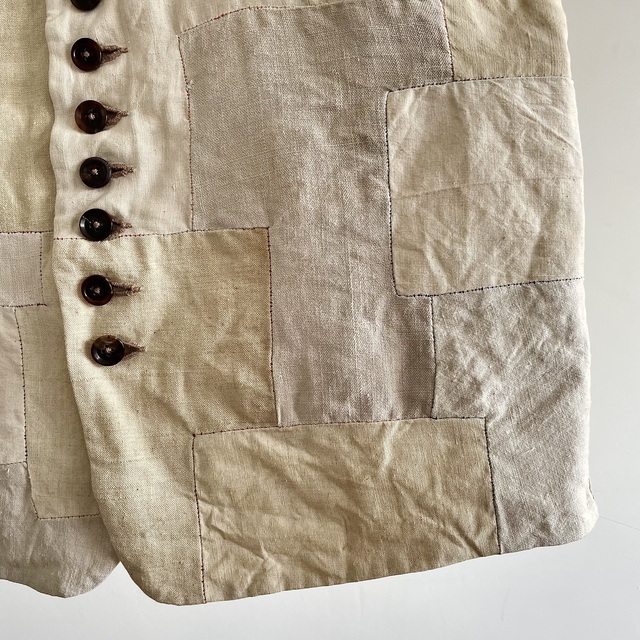
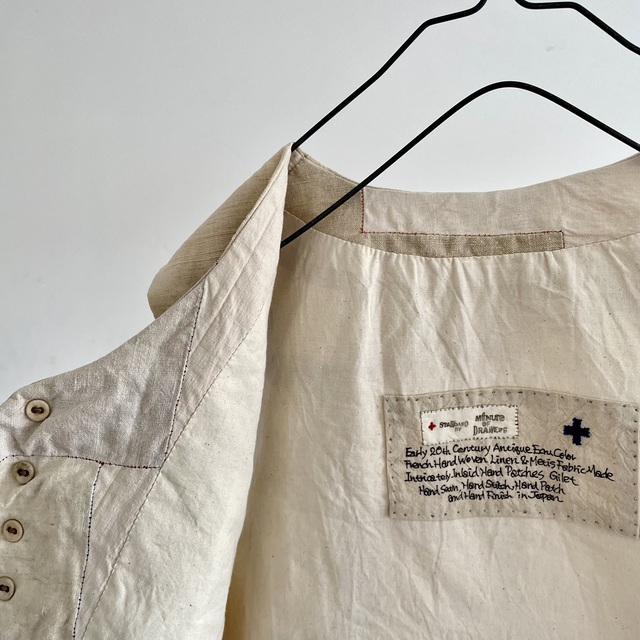
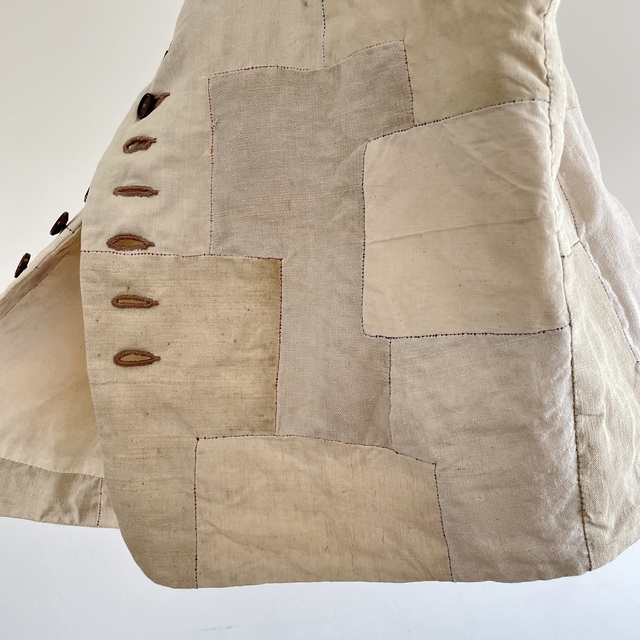
このpatchも、ミシンで縫えば縫い目も綺麗で、必要な時間は10分の1。しかし、それを手で縫うことの意味は、きっとある。
This PATCH could be sewn with a sewing machine and the seams would be beautiful, requiring only one-tenth of the time, but there must be a point to sewing it by hand.
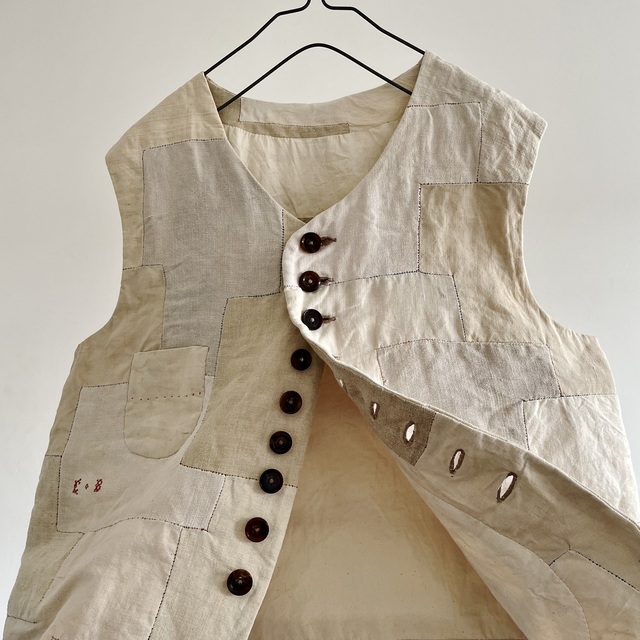
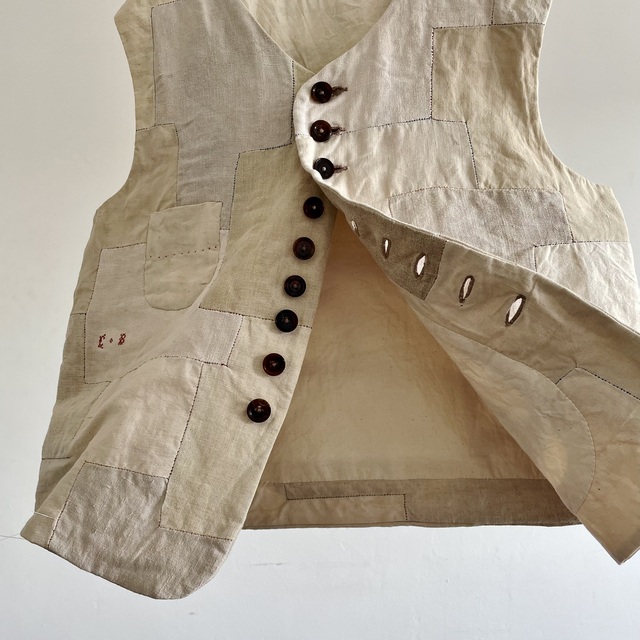
手で縫い付けたuselessポケットと、アンティークの生地に残った刺繍。
Useless pockets sewn by hand and embroidery left on antique fabric
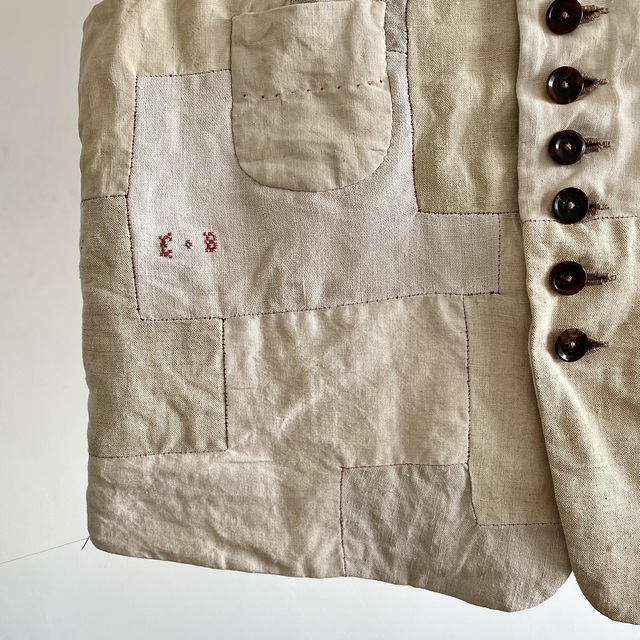
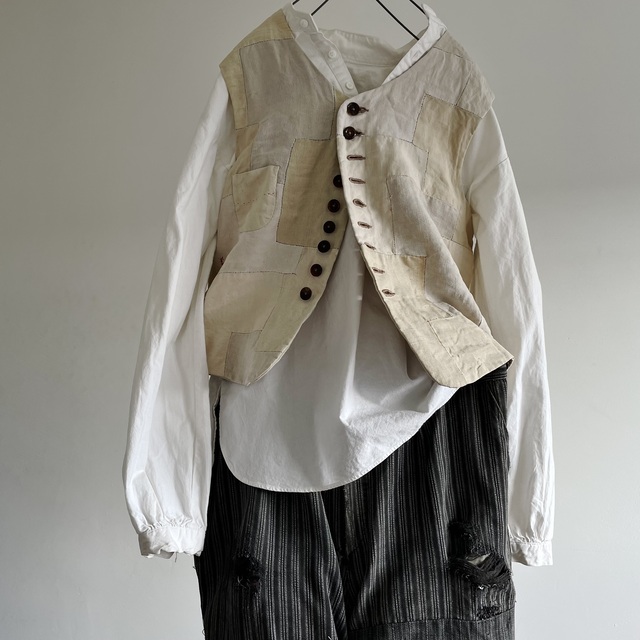
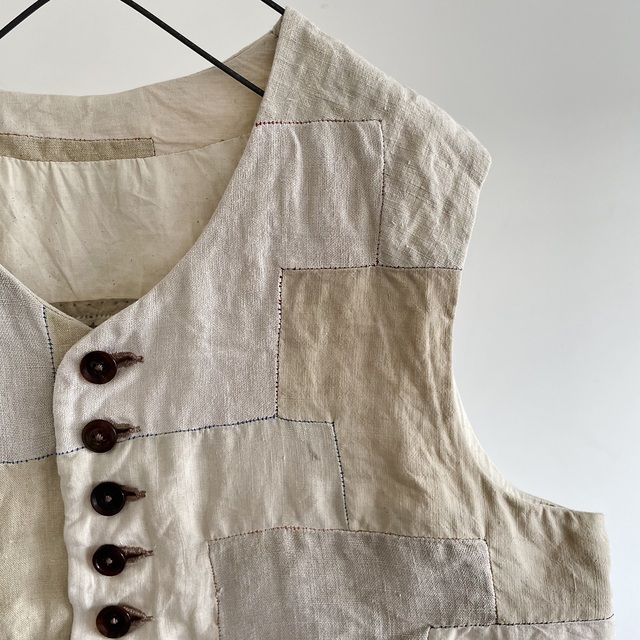
パーツに取り入れた、フランス刺繍のdrawn work部分。
French embroidery drawn work incorporated in the parts.
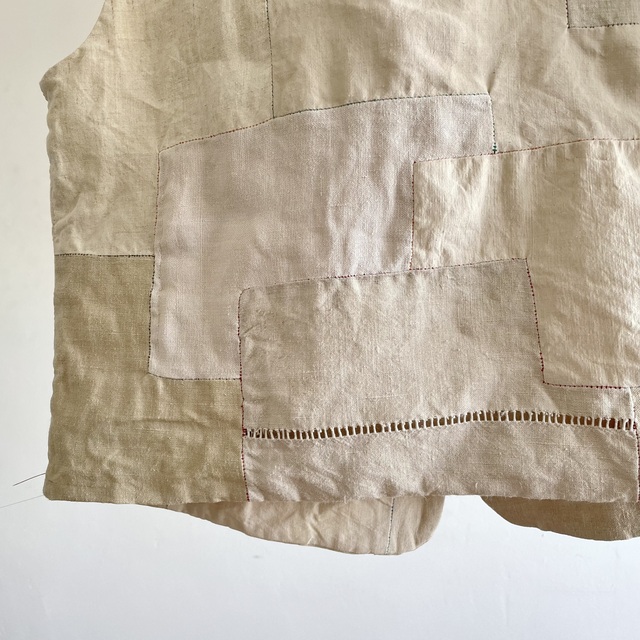
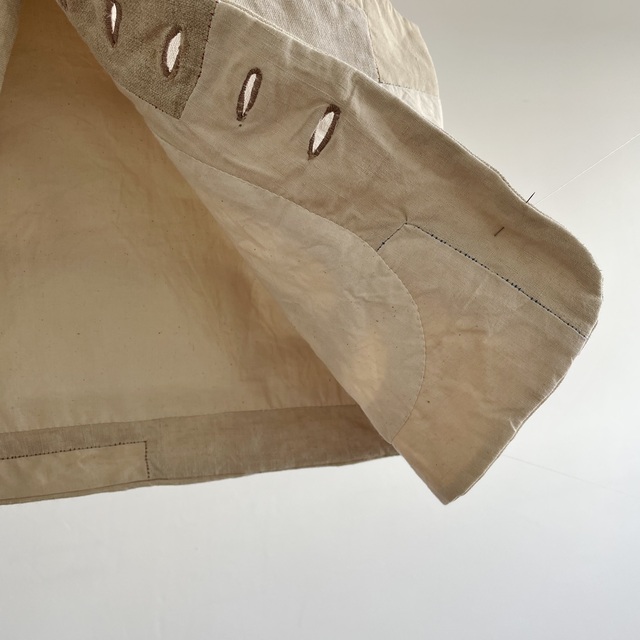
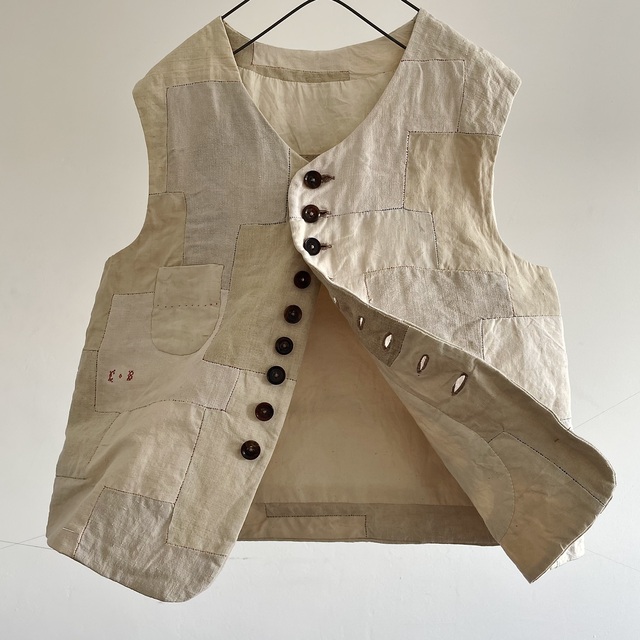
間隔を詰めて、ずらりと配したボタンは、4種類のbaffalo horn。
The buttons, narrowly spaced and arranged in rows, are fore types of baffalo horns.
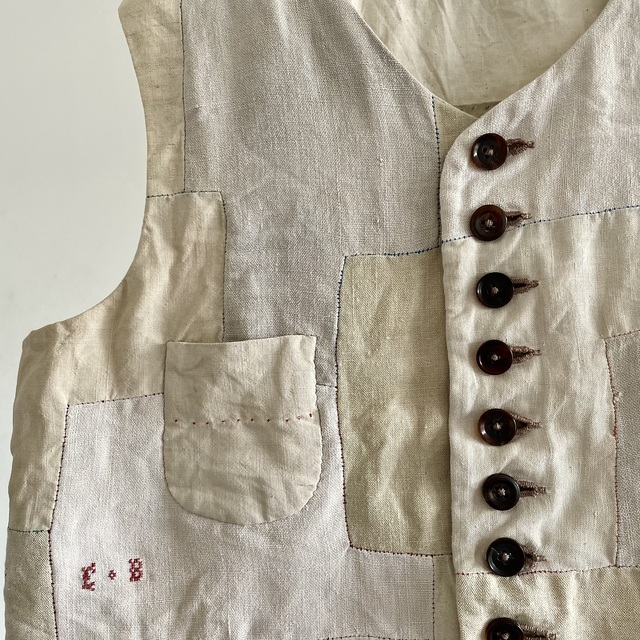
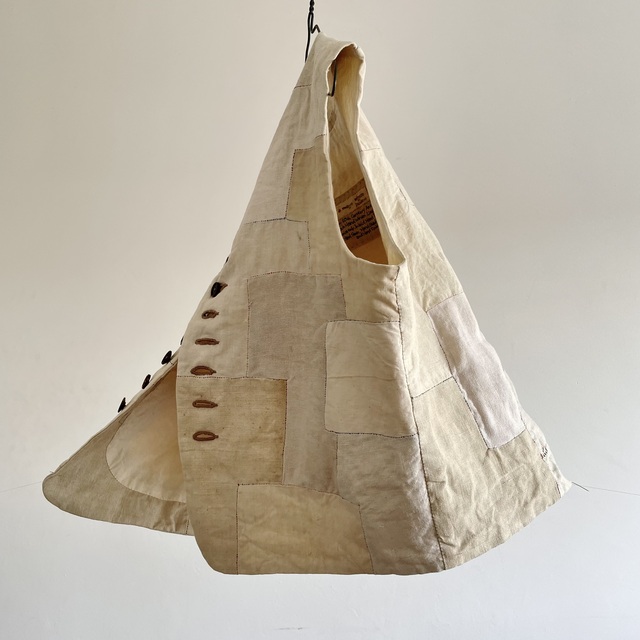
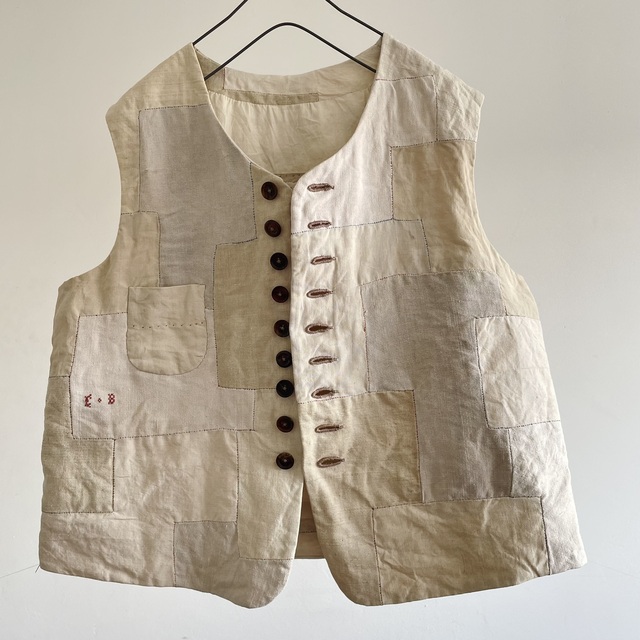
ボタンホールも全て、リネンコードで手縫いされたもの。
All buttonholes are also hand-stitched with linen cord.
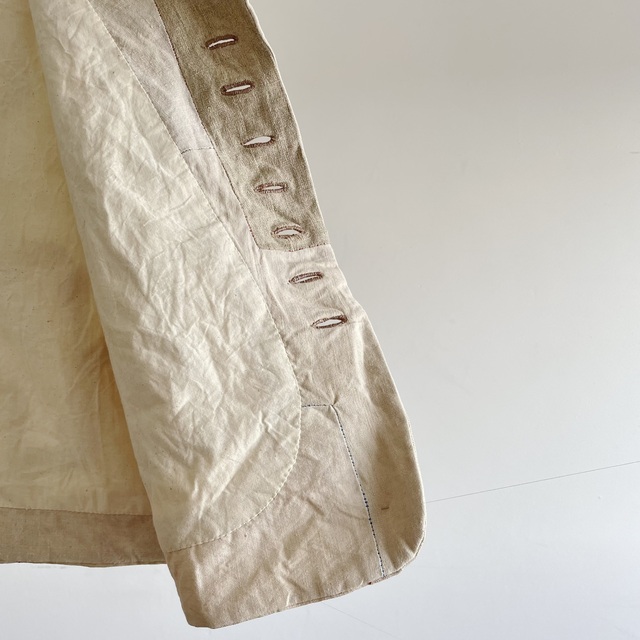
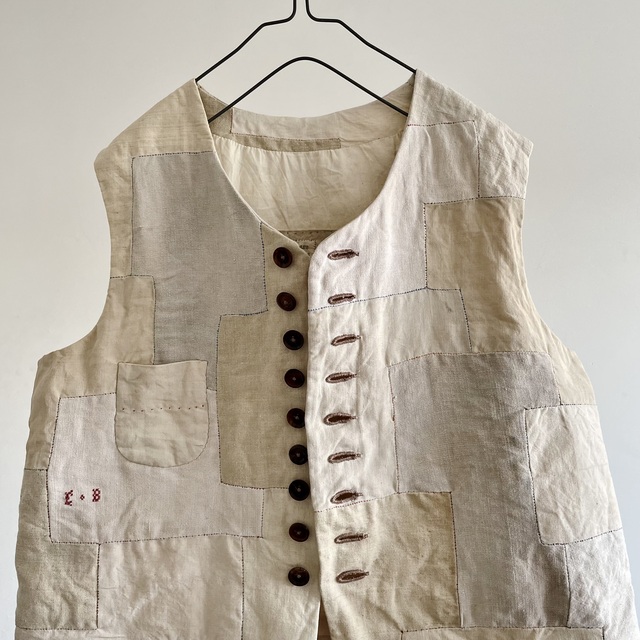
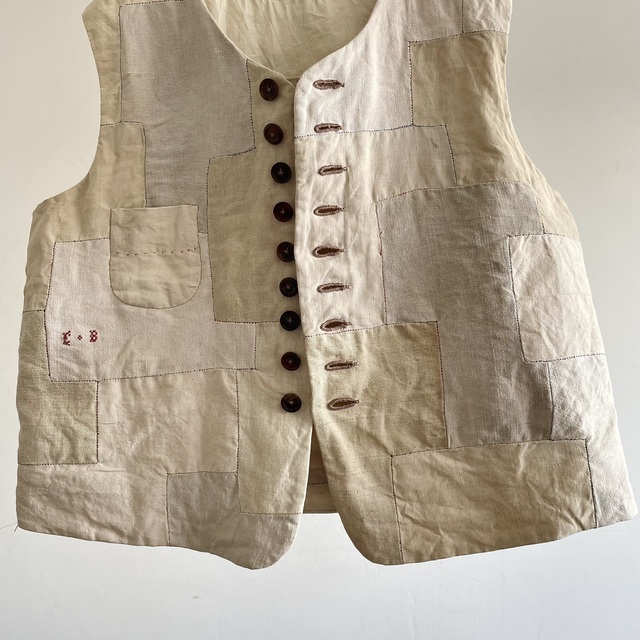
裏には未晒しのラスティックなコットンを手でまつり付け、手縫いならではの縫い皺のふくよかな表情を。
Unbleached rustic cotton is hand-matted on the reverse side to give a plump look of hand-stitched wrinkles.
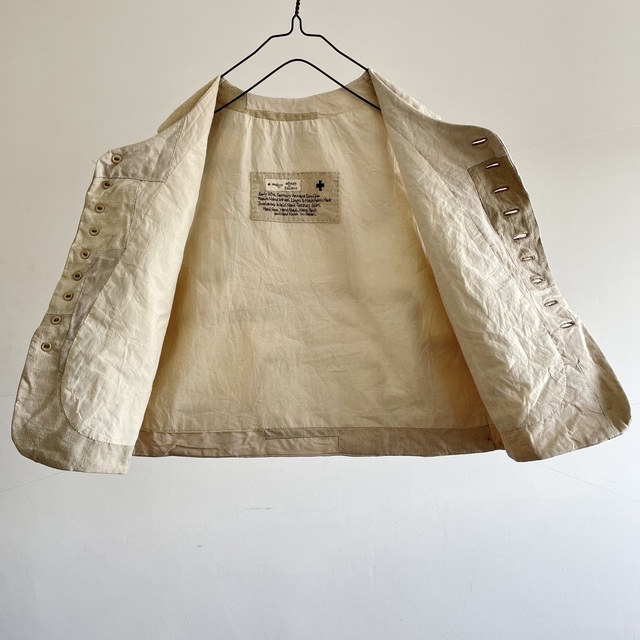
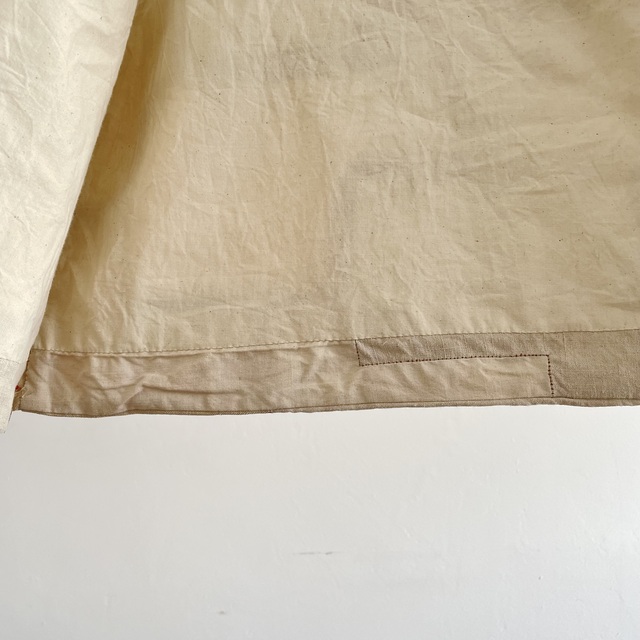
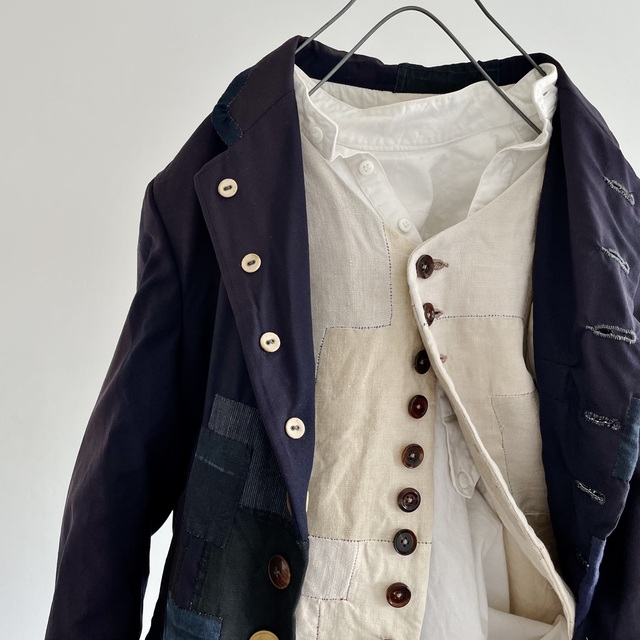
前身頃と背身頃をつなぐ脇も肩もすべて手縫いです。だからこそ生まれるふくよかな皺、手じゃなければ出来ない事、手だからこそ出来るもののかたちです。
The sides and shoulders connecting the front and back are all sewn by hand. This is why the wrinkles are so plump, something that can only be done by hand, and a form of something that can only be done by hand.
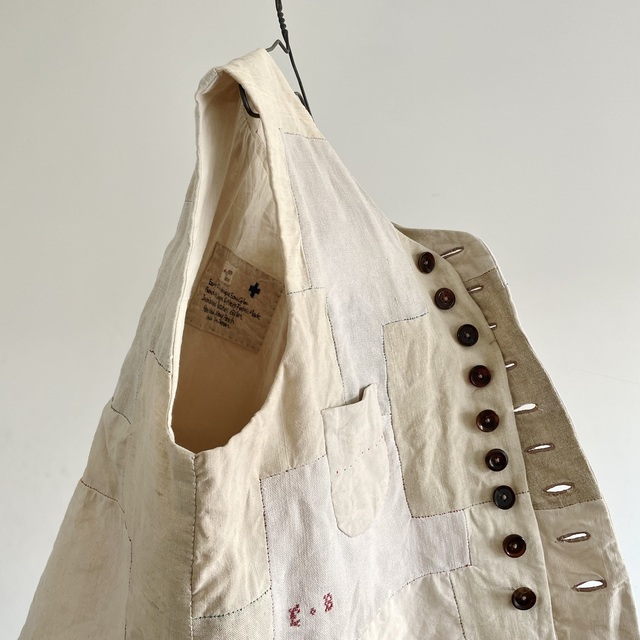
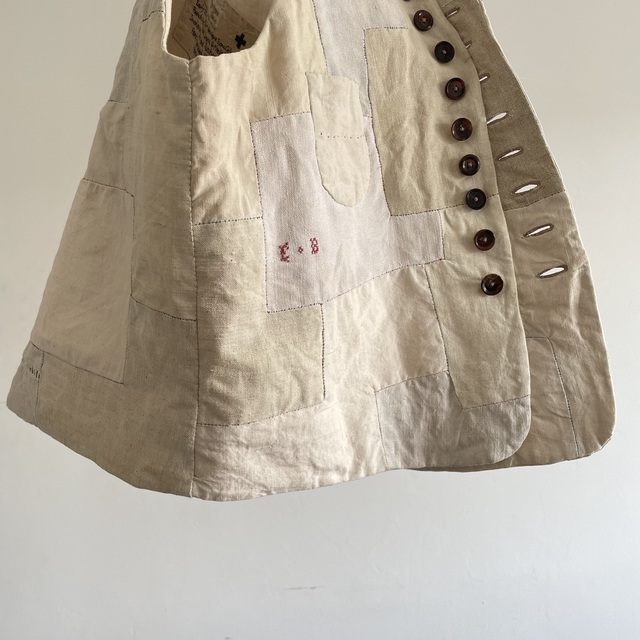
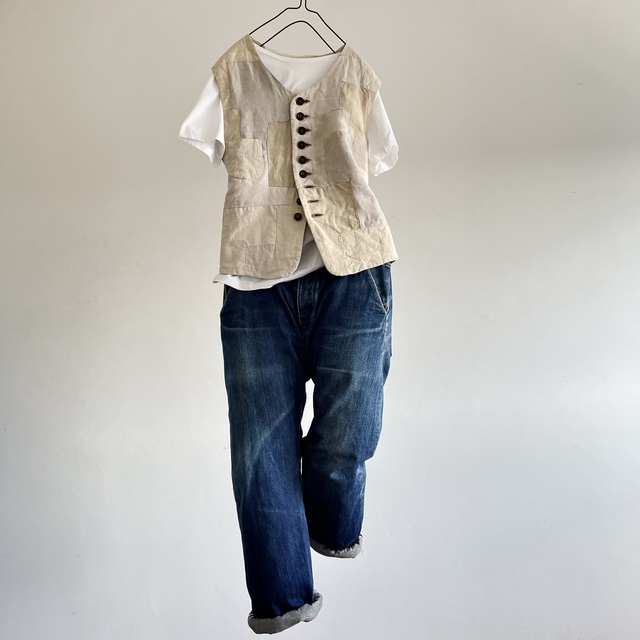
サイズ 2
肩幅 = 39cm
バスト= 52cm(脇下)
前着丈= 59cm
後着丈= 53cm
日本製
Front Fabric = Hand Woven Antique French Linen / Linen & Metis
Lining Fabric = Indian Rustic Cotton Broad Cloth
Button = Buffalo Horn Button (Random Choice)
& Antique Fabric Covered Buttons
STOREへのリンク
[STANDARD By Manure Of Drawers] SOLD

